We were born into this.
As we say this, putting on our best English-men Bane impression from Batman. To us dark-mode was a statement hearkening back to the year-2000 style hacker sites serving as a warning. Simply put, don't trust the internet. Don't trust this site, and especially don't trust any company sites that want their hand out for money.
 Like Malwarebytes. A website that profits off of humanities unwillingness to educate themselves. But in this example of a banner ad; For a person who got 'schooled' by hackers in a phishing scheme. Karen over there sure is smiling! We think that this is less of a software issue and more of a management issue. Maybe Karen is "only human" for committing industrial espionage, perhaps? Perhaps Karen realized how much of a group of souless monsters she works for. So when someone called claiming to be Microsoft tech support, she said the following:
Like Malwarebytes. A website that profits off of humanities unwillingness to educate themselves. But in this example of a banner ad; For a person who got 'schooled' by hackers in a phishing scheme. Karen over there sure is smiling! We think that this is less of a software issue and more of a management issue. Maybe Karen is "only human" for committing industrial espionage, perhaps? Perhaps Karen realized how much of a group of souless monsters she works for. So when someone called claiming to be Microsoft tech support, she said the following:
No problem. In fact, can you hold for a second? I think I can you the CEOs password he puts underneath his keyboard. Oh no! It's not a problem for me! Afterall if he followed the security protocols his IT department told him repeativly then I shouldn't find it right? Right! Your Microsoft tech support. You should know this anyways.. Hold on... Ahh! Yes, it's "123456" Yup, he totally pulled a spaceballs on this one. - Karen"
And then she posed like this at your cubicle. Waiting for the reign of terror to fall all around her. Her schooling is certainly paying off now! Who's the monster NOW, Karen?!?!?
But we're falling a little off track. There's apparently another statement about going 'dark' on your website. That it apparently is environmentally friendly.
Read on if you want to know more.
During the dinosaur days of the internet.
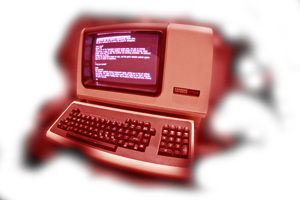
4:3 dimensional CRTs reigned the defacto standard of computing from the early 70s all the way up to the late 90s/2000s. CRTs relied on a cathode ray tubes to blast pixels onto that display screen. This effected the VT-100 terminal showed in the picture above. as well as the Sony Trinitrons that gamers were using to play counterstrike on their Windows 2000 boxes.
It's simple really. Black screens didn't need as much energy to fire up at a pure white screen. Sure, there were people who tried to prevent eye-strain like Wyse which was making terminals that were all white with black text. But another reason why CRTs stayed black by default is a terrible thing called "screen burn". Keep blasting energy into a certain point for hours/days/months, and it stays like that forever.
You had screensavers to stop this from happening. But blasting colors 24/7 on a screen while no one is there isn't really doing anyone favors.
Nowadays collectors and old school gamers would go thrift-hunting for CRT displays to relive the pains of the past within the realms of nostalgia.
Little side note: Yes, there was Plasma TV technology. Kinda suffered from the same fates as CRT.
Getting modern.
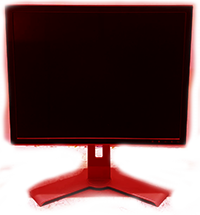
Most of us now have an LCD of sorts, which this would normally be there the dark-mode energy conservation issue would die. Because the color of the LCD is controlled with liquid matrix and the actual "Light" is either driven by a fluorescent tube or a series of LED arrays like what we built for our home lighting.
One could argue this is where screensavers come to die as well. Except that if you had your LCD for any length of time. You could still get a sort of 'burn-in' if your LCD is ancient due to the liquid crystals inside breaking down.
Present day.
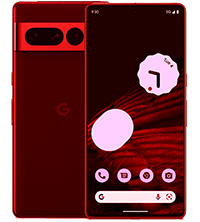
A lot of modern phones and flat panels tout the concept of OLED technology. With the concept that instead of a LED backlight that the LED itself is emitting the color and light down to the size of a pin-needle to produce the screen at a far crisper view then what anything CRT or LED flat-panel screens could produce as black is OFF being absolute in contrast. No greys instead of black. It's either on or off.
Now, dark-mode becomes environmentally important again! Mobile Enerlytics did the research and crunched the numbers on just the mobile side alone. Saving anywhere from as low as 1 percent. to as high as 30 percent. This is with a low-power item such as a mobile phone. Thus, websites such as apple are the real environmental disasters for introducing the 'clean and sterile' white backdrops to many websites throughout time.
Final thoughts.
From a truly ecological standpoint. E-Paper technology was actually terrific in reguards that the pixels are moved on the surface of the screen and simply 'stay' even if no power and given to the screen. It was something e-readers were really pushing, but eventually fell aside. Our guess is people didn't want to carry 2-3 tablets through the airport when their OLED does it all for them.
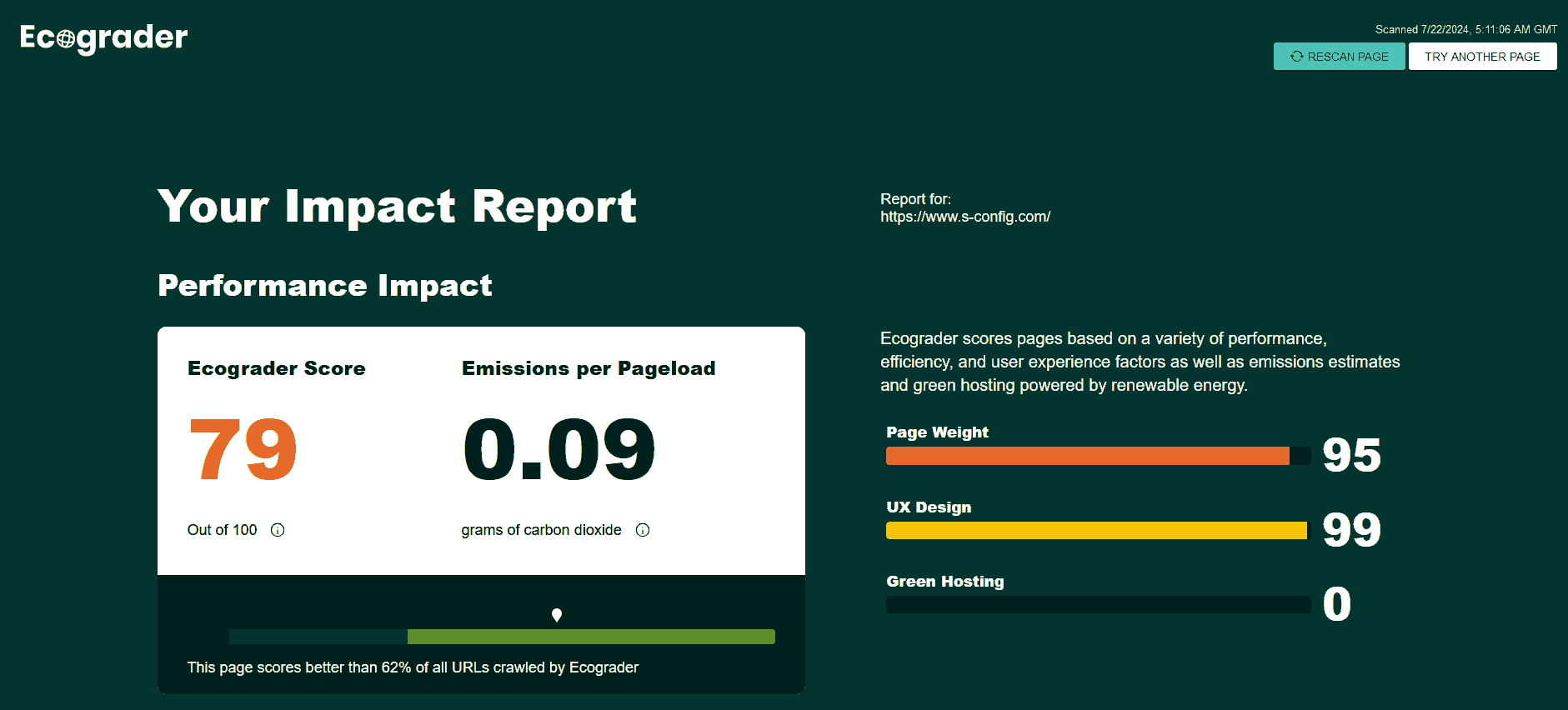
There are sites like Ecograder that gave us a low score based on how we're resizing images to fit our content, instead of making the same image over and over again filling up space on my VPS in order to satisfy a 12kb of less data going across. But it fails to calculate the impact of the data leaving my box and hitting the client. The amount of CPU cycles to decompress that data with using newer image standards such as AVIF or WEBP. Or, the implications of dark mode on modern phone and screen technologies.
Will we be moving to a datacenter that uses a solar grid farm containing mercury, lead, cadmium, or other harmful chemicals that aren't factored into their tests because it only cares if the datacenter meets a narrow set of rules for renewable energy? Probably not. Consider this score is sampling best case scenario. As it only samples, the home page containing the least amount of pictures. We're rather sure our score is far worse. But nothing we can do about that.
In the end of it all. We found it interesting doing something for aesthetic reasons. Like keeping, it dark-mode 24/7 ends up with benefits many years later.
That's what server said.
END OF LINE+++

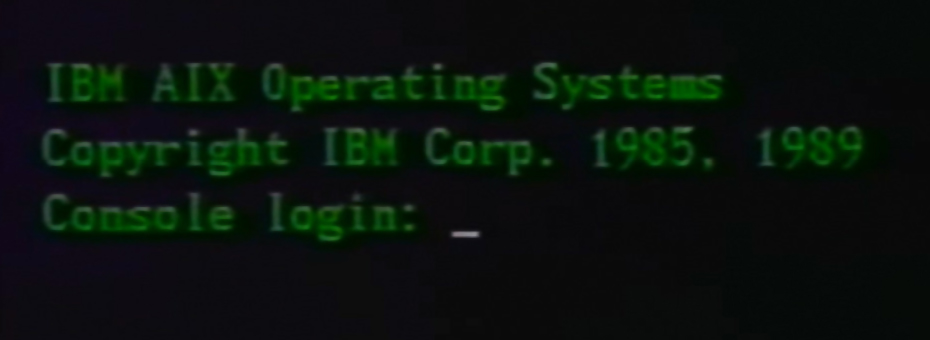
>"grams of carbon dioxide"
Carbon is a red herring.
Everything focuses on carbon, and ONLY carbon.
This is to make you forget things like resource depletion vs recycling/replenishment of said resources. PFAS and other "forever chemicals" in rain, and detectable levels of plastic in human testicles. Continuous loss of topsoil thanks to the flush toilet; humans are a massive population that consumes a massive amount of food, shits it down the toilet, and flushes into the ocean rather than composting and replenishing topsoil and fertilizer.
Guess where most fertilizer comes from as a result? OIL! That's right, nitrates from oil. The moment you "stop oil"; a few billion starve, multiple species get eaten to extinction almost overnight, those who kept drilling become the new ruling oligarchy, and those who compost their own shit get to be the second-place survivors behind those who kept their oil.
All the carbon under the surface was once on the surface and only sequestered into by biological decay processes.
Bring it back to the surface only encourages plant growth and produces more biomass, and thus more composted plant material and topsoil.
Carbon. Doesn't. Matter.